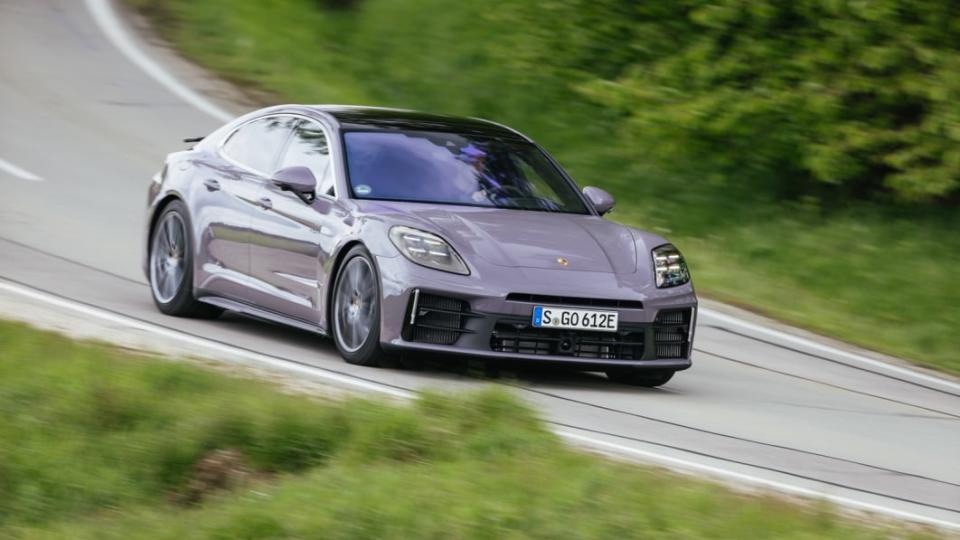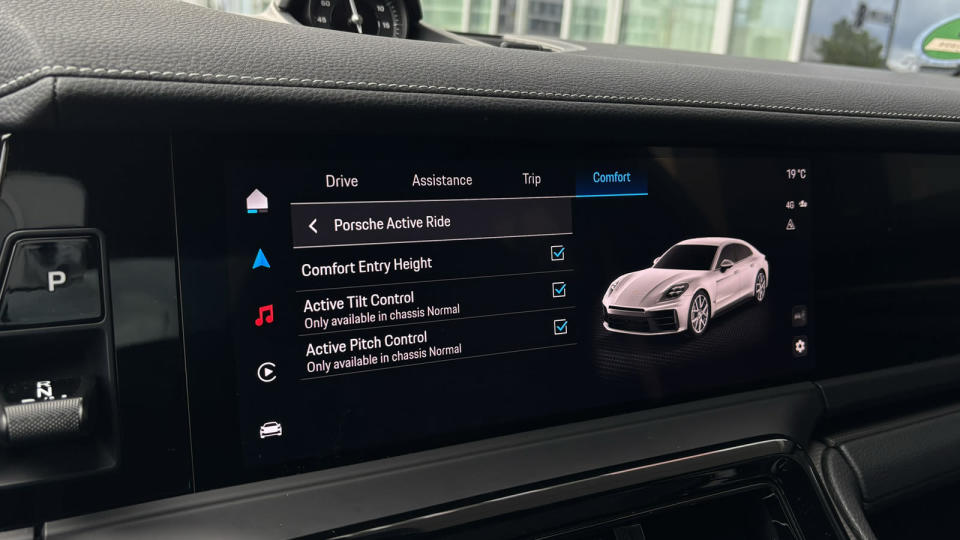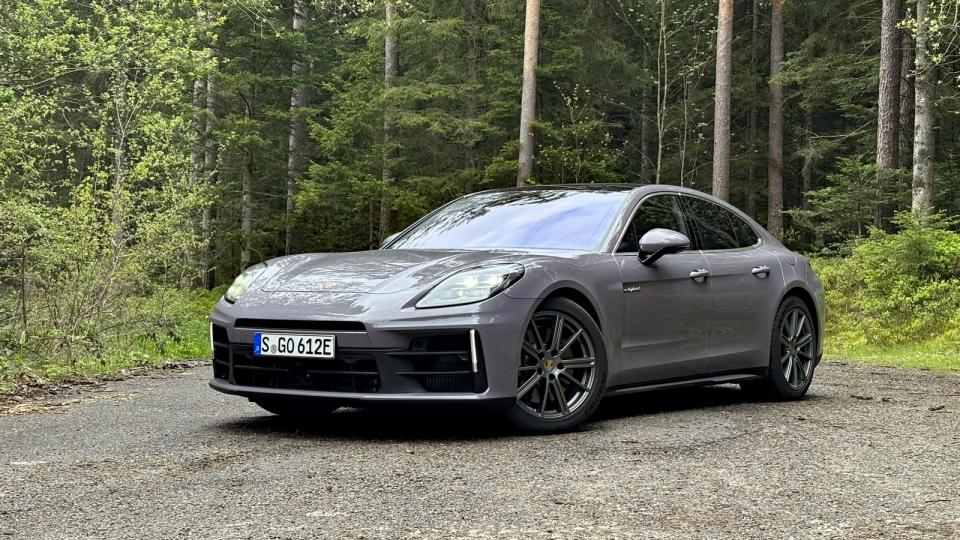2025 Porsche Panamera E-Hybrid First Drive Review: Part electric, part gas, part boat

STUTTGART, Germany – Cars with different drive modes are commonplace. Even a humble Kia has a Sport button that tightens up the steering a smidge and makes the throttle more responsive. Two cars in one they do not make, however. The 2024 Porsche Panamera E-Hybrid, on the other hand, comes awfully close to pulling off the trick. Not by futzing with the steering effort – that remains resolutely constant, per Porsche’s wise tradition – but by boasting the powertrains of an EV and gas-powered engine. Of course, plug-in hybrids are commonplace themselves, but this one distinguishes itself with a gasoline engine that’s characterful, accompanied by a saucy exhaust note and coupled to a transmission that snaps off shifts like a Porsche, rather than stirring through ratios like a Prius Prime. It’ll be silent and sophisticated when you need it – to work, to dinner and when stuck in traffic. But with the turn of the drive mode dial, it’ll come alive with the sort of sounds and feelings that make even the most EV-angelized car enthusiast take pause for what may be lost.
It can also make you feel like you’re piloting a boat. Or possibly something on a different planet where physics behaves just a bit differently. Plant the throttle and the nose plants along with it, like you’ve ignored a sign reading “Caution: Boat Launch.” Hit the brakes, and the nose comes up like a Jet Ski cutting its motor and rising as it slows into the water ahead. It can feel like you’re submarining in a totally un-nautical way, as if your actual body is sinking in your seat and being pulled under the steering wheel. In instances of lighter braking, it can feel like the back of the car is gently being pressed down into the road, almost like a rollerblade brake. Or an airplane pitching up for landing.
Wait, what’s going on? Exactly, things just got weird. And “weird” is the perfect word for the Active Ride suspension that’s optional on the Panamera 4 E-Hybrid and more powerful Panamera 4S E-Hybrid, even if the technology is wildly fascinating. In place of passive shock absorbers, Active Ride utilizes electrically powered hydraulic motor/pumps at each two-valve damper to independently control compression and rebound or, if you prefer, to raise or lower their entire corner of the suspension.
This takes adaptability to a new level, allowing the car to maximize handling and ride comfort like never before – it also eliminates the need for anti-roll bars since each damper reduces or eliminates roll independently. There are air springs (the standard setup is still an advanced adaptive air suspension itself), but they’re really only there to support the weight of the car when it’s off.
View this post on Instagram
For all intents and purposes, Active Ride achieves the same result as various adaptive air suspensions: It gets firmer for tauter handling, softer for a more comfortable ride and adjusts the ride height for a lower stance that benefits aerodynamics as well as handling. It just goes further than that, and all you have to do is open the door to realize it. The car pops up several inches, and yes, “pops” is the best word to describe the very quick, smooth action. After a day getting in and out of the Panamera, the trick never stopped being funny – you’re just not expecting a car to behave like that. You’re also not used to that much gap between the tire and wheel arch of a Porsche, be it a car or SUV. Even the Dakar looks like a GT3 compared to what I dubbed Panamera Wilderness mode. Sadly, you can’t drive around like that because I guess no one at Porsche appreciates that type of humor. Hopefully your passengers will appreciate the easier entry and exit into the Panamera’s deeply slung seats.
But what about all those body motions that require comparisons to various conveyances other than automobiles? The system is designed to counteract body roll and keep the car perfectly level through corners, which it most certainly does. This brand of physics-defying wizardry isn’t strictly new, however, even if the method and degree of proficiency are. It also doesn’t screw with your equilibrium as much as the pitch-mitigation functionality that’s added only when in Normal suspension mode (automatically selected in all-electric E-Power and Hybrid Auto modes; driver-selectable in Sport and Sport Plus). Maybe it’s just that while cornering, your eyes are too distracted by the typical effects of lateral inertia, but either way, there’s no missing the front suspension lowering when accelerating and raising during braking – and most noticeably resetting back to normal thereafter. It gives a whole new meaning to the automotive dynamic description of “nautical.” It’s a fascinating if potentially nauseating feeling, and maybe you’d get used to it, but honestly, why bother? It’s hard to imagine the stock air suspension not being sufficiently stellar.
Leaving Active Ride in Sport turns off the high-seas trickery, and although Germany’s chef’s-kiss pavement will always make it a little tough to determine ride quality, it seems perfectly livable. Associate Editor Byron Hurd concurred, reporting that the Active Ride-equipped non-hybrid Panamera was “quite tolerable” on Seville’s “asphalt seemingly held together by the still-whole bones of dead crusaders.” Sounds like it should be good in Michigan and California, then. Plus, with Sport selected, it makes it a lot easier to zero in on the Panamera’s improved plug-in hybrid powertrain.



 Yahoo Autos
Yahoo Autos 